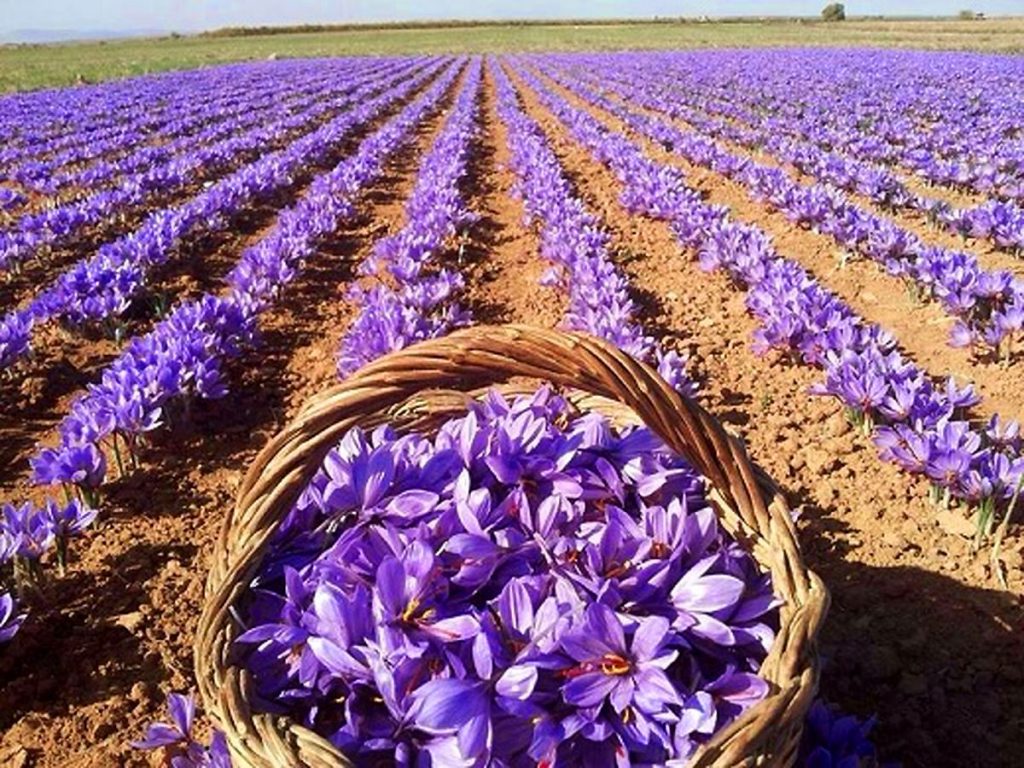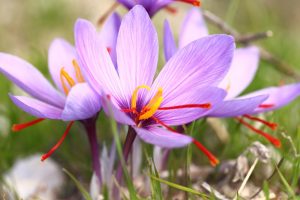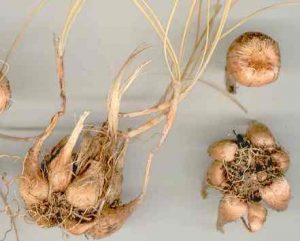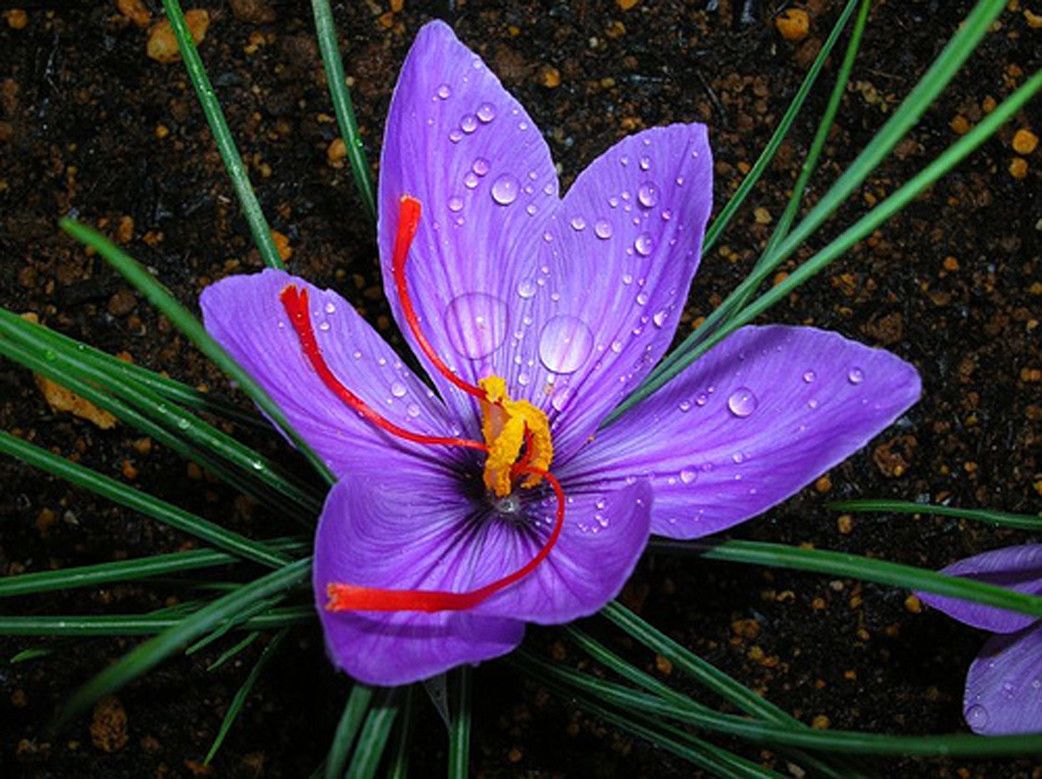Saffron Crocus or Crocus Sativus The excitement is heating up as the bulbs are finishing their growth for the year and are being harvested in many countries around the world. The Middle East is a prime location for big fields of bulbs, but India, France and the Netherlands are other countries growing the Saffron Crocus. Each corm is planted 3″ down and about 2″ apart and they increase over time into clumps. 
 Growing Saffron Crocus The corms are planted upon receipt and can be planted any time during the year, but are ideally planted in the fall after the harvest, drying and shipping of the bulbs from their country of origin. They go dormant, much like naked ladies or other adapted bulbs to dry climates, and send up foliage and flower buds at the same time. As the foliage is grass like and thin, most of the show comes from the flower. Harvesting Saffron Spice and Aftercare Each flower has three threads of saffron spice and they must be harvested as soon as the flower opens. The threads are plucked off and placed on a surface to dry. They are then ready to be put into an airtight container or used immediately for cooking.
Growing Saffron Crocus The corms are planted upon receipt and can be planted any time during the year, but are ideally planted in the fall after the harvest, drying and shipping of the bulbs from their country of origin. They go dormant, much like naked ladies or other adapted bulbs to dry climates, and send up foliage and flower buds at the same time. As the foliage is grass like and thin, most of the show comes from the flower. Harvesting Saffron Spice and Aftercare Each flower has three threads of saffron spice and they must be harvested as soon as the flower opens. The threads are plucked off and placed on a surface to dry. They are then ready to be put into an airtight container or used immediately for cooking.  After the blooming period, the corms will divide and produce many smaller corms. Eventually these will grow larger and produce clumps with many flowers. In climates that get frost, the corms may be left in the ground as long as there is not a heavy freeze but will benefit from mulching. Or they can be dug up and brought into a cool basement or garage as long as the temperatures are not freezing as well. If left in the ground, they go through a dry and dormant period during the summer and begin to grow again in the fall and bloom usually in the late fall. It takes 70,000 flowers to produce one pound of saffron, and the price of $5000 per pound indicates the labor that goes into the production of the spice, saffron, and makes it the most expensive spice in the world.
After the blooming period, the corms will divide and produce many smaller corms. Eventually these will grow larger and produce clumps with many flowers. In climates that get frost, the corms may be left in the ground as long as there is not a heavy freeze but will benefit from mulching. Or they can be dug up and brought into a cool basement or garage as long as the temperatures are not freezing as well. If left in the ground, they go through a dry and dormant period during the summer and begin to grow again in the fall and bloom usually in the late fall. It takes 70,000 flowers to produce one pound of saffron, and the price of $5000 per pound indicates the labor that goes into the production of the spice, saffron, and makes it the most expensive spice in the world.
Marde's Blog
Saffron Crocus


0 Comments